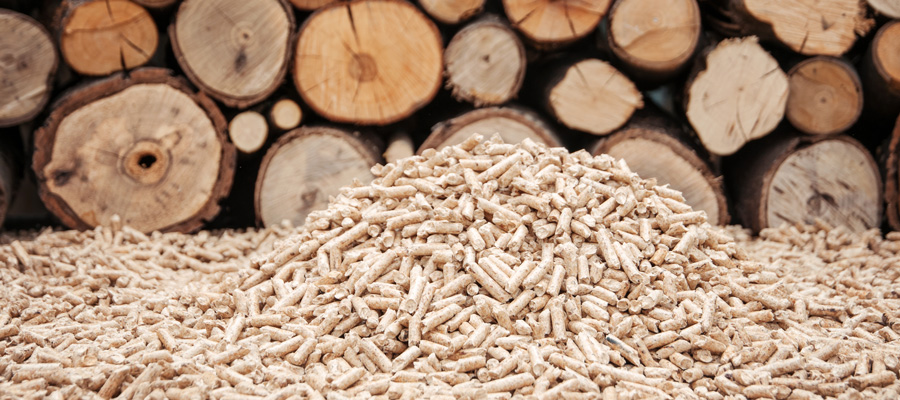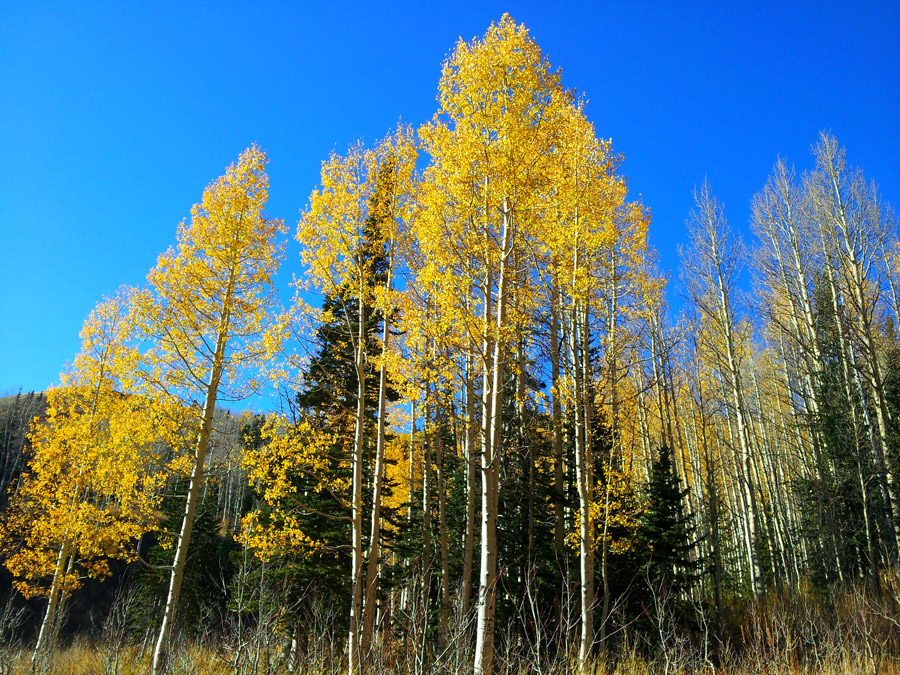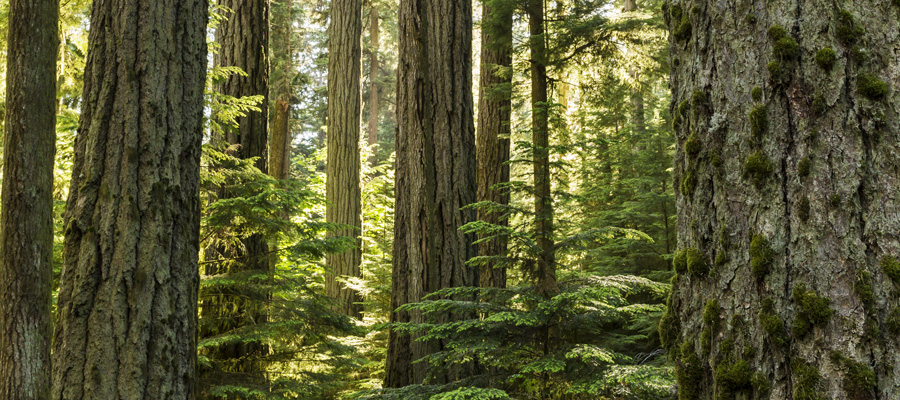Trees to pellets? Scarred by two previous resource industry boom and busts, pivotal decisions lie ahead for community of Fort Nelson

The residents of Fort Nelson know better than most rural British Columbians about the harsh economic realities of resource dependency.
It is now 13 years since the forest industry ditched the community in dramatic fashion when Canfor Corp. ceased all its local operations in the region and closed its plywood and oriented strand board (OSB) mills on the outskirts of town. Between them, the two wood panel mills had employed 600 men and women.
The community then enjoyed a brief economic resurgence as fossil fuel companies swept into the region during a short-lived natural gas industry fracking frenzy. Many laid-off forestry workers found new jobs and the community’s service sector took off.
At one point, so many outsiders were flocking into town that three 737 passenger jets came through its tiny airport in a single day.
But as detailed in a previous CCPA brief, the bust that followed was devastating. Not only did it amplify the earlier forest industry losses, but it left behind a sprawling network of deteriorating natural gas industry processing plants and other industry infrastructure that is anybody’s guess who will clean up and at what eye-popping cost.
Such stories of fleeting economic benefits and crippling liabilities are familiar to many rural British Columbians.
Yet, once again, forces are aligning to push for another major resource industry play in the Fort Nelson region. Forest exploitation plans are back on the front burner, with the services of a former provincial chief forester and a well-placed former NDP cabinet minister turned lobbyist (among others) there to advance corporate interests.
The scale of what is proposed is dizzying and includes plans to:
- Log the region’s hardwood aspen trees and softwood spruce trees at a pace never before seen, with about 100 square kilometres of forest to be cut down each year.
- Convert virtually all of the logged aspen trees directly into wood pellets at what would be the largest wood pellet mill in Canada. While wood pellets are technically a “forest product,” they represent only a marginal improvement over cutting down trees, turning them into logs and then exporting all that raw, green gold in the holds of freighters bound for China.
- Send many if not all of the highly valuable logged spruce trees out of the region by truck to Fort St. John, a five-hour drive south down the Alaska Highway or points even further beyond, where a well-established sawmilling industry, dominated by Canfor, would turn the logs to lumber instead of the logs being turned into lumber and other products in Fort Nelson.
None of the above is a certainty as yet. But a pivotally important decision is imminent, one that could have a significant impact on how events unfold. In order for these plans to go ahead, the provincial government must agree to transfer rights of access to the region’s forests from Canfor, which still holds significant logging rights in the Fort Nelson region in spite of having shuttered its mills, over to Peak Renewables, which is spearheading the pellet plan.
Second, the Indigenous and non-Indigenous communities in Fort Nelson now co-own the largest community forest licence in the province. They have a direct stake in what is about to unfold and can, if they choose, work together to ensure that the forests under their direct control deliver the maximum benefits to local residents and businesses.
And third, having been burned twice by big resource industries sweeping into town with grand plans to cash in on the region’s natural resource wealth, there is at least some opinion in town that what’s good for one company may be a big risk to the community.
With that said, let’s take a look at what brought Fort Nelson to this pivotal point and what may lie ahead.
Going up, way way up
In July 2019, the provincial government announced a new maximum logging rate for the Fort Nelson Timber Supply Area, the second-largest such administrative unit in the province. The decision dramatically increased the Allowable Annual Cut (AAC) to 2.58 million cubic metres of trees per year.
The decision was justified partly on the grounds that Canfor Corp. had not done any logging of consequence in the region’s forests since 2008, the year it closed its local mills and abandoned the town’s residents.
That lack of logging, in the opinion of the provincial government’s chief forester, meant that a huge amount of forest—including provincially significant tracts of old-growth—had “accumulated” for potential future logging.
The newly approved logging rate was 58 per cent higher than the rate previously set by BC’s chief forester in 2006.
If the new and vastly inflated logging rate is achieved, it will result in approximately 100 square kilometres of forest being cleared in the region every year, with roughly half the logged trees going directly to the proposed pellet mill. A map recently released by Conservation North shows that much of that logging would occur in a region with some of the largest remaining tracts of unlogged primary forest in all of BC’s interior.
According to a provincial government database, the recently approved and vastly higher rate of logging could result in more than a doubling of the logging rates in 2006 and 2007, the last two full years that Canfor operated in the Fort Nelson region.
With its decision to ramp up approved logging rates, the provincial government by default or design encouraged someone to waltz into town with a big proposal, which is exactly what has happened.

When the Canfor closed its Fort Nelson OSB and plywood mills in 2008, 600 mill workers lost their jobs. A proposed wood pellet mill would get 50-60 manufacturing jobs back.
Communities empowered?
On the very same day in 2019 that the provincial government announced the new allowable annual cut for the Fort Nelson area, it also announced that a new “community forest licence” had been awarded to a partnership between the Fort Nelson First Nation and the Northern Rockies Regional Municipality.
The licence is the largest of its kind ever to be awarded in BC, and provides a strong basis for the communities to work together to achieve various social and economic objectives. It covers an area of land 200,000 hectares in size (about 500 Stanley Parks) and with a dedicated maximum logging rate of 217,650 cubic metres per year.
Large as the community forest licence is, the government had a golden opportunity at the time to act even more boldly. Since Canfor’s departure the decade before, there had been virtually no commercial logging in the sprawling Timber Supply Area. There was nothing stopping the Province from turning the entire thing over to both communities and letting them figure out together how to sustainably manage the region’s forests to maximum social and economic benefit.
Still, the communities were happy to take what they could get. In a jointly issued press release, Fort Nelson First Nation chief, Sharleen Gayle, said that the new licence means “that our people will own forestry opportunities here in FNFN territory. This partnership . . . is a win-win for our local governments, our members and the local residents that reside here in our territory.”
Northern Rockies mayor, Gary Foster, added that the new licence “represents a crucial step toward breathing life back into the region’s economy.”
Large as the community forest licence is, the government had a golden opportunity at the time to act even more boldly.
If and when logging takes place within the boundaries of the new community forest, it will fall to a four-person board to determine who will be granted access to the trees.
The Fort Nelson First Nation (FNFN) has a very powerful and influential appointee on that board and in its corner. Jim Snetsinger is currently a forest consultant living in Prince George. But previously, he was the provincial government’s chief forester. He has done contract consulting work for the Nation for a number of years. Also representing the Nation’s interests at the board table is Katherine Wolfenden, who was at one time FNFN’s Land and Resources Coordinator.
Board members representing the community of Fort Nelson are Lorence Forsberg, who is also the board chair and who once worked in Fort Nelson’s OSB mill, and Jeff Beale, a forest consultant based out of Fort St. John.
In a telephone discussion with the CCPA, Forsberg said that several expressions of interest have been submitted to the board to utilize wood that could one day come from the community forest. One of those proposals was submitted by Peak Renewables, the company spearheading the plan to build the massive wood pellet mill in Fort Nelson.
Backed into a corner – again?
At the time the community forest agreement was unveiled, Peak Renewable was not on anybody’s radar.
Things were in a state of suspended animation in 2019, and had been since the gut-wrenching events of 2008 when Canfor shuttered the two major timber-processing facilities in town.
Despite closing the mills for good, Canfor continued to hold its provincially awarded forest licence, which allowed it to log a substantial swath of forest in the Fort Nelson area. But the company was doing no logging in the region and gave no indication that it would, essentially retaining the right to resume logging at some distant point in the future. Canfor’s decision to hoard its Fort Nelson wood left many local residents feeling like they’d been backed into a corner.
But this past November, things suddenly changed. Canfor said that it had entered an agreement with Peak Renewables to transfer its Fort Nelson forest licence. If Peak gets the licence, it proposes to build a massive wood pellet mill—the largest in Canada—on the outskirts of the community where Canfor’s long-idled OSB and plywood mills once operated.
The November announcement also made clear that Peak and the Fort Nelson First Nation were in negotiations to make the Nation an equity partner in the proposed pellet mill.
The agreement between Canfor, BC’s largest forest company and Peak is described as a “multi-year $30-million deal.” But neither Canfor nor Peak will provide details on how their “multi-year” transfer/purchase agreement is structured, saying that the agreement’s terms remain confidential.
When the two companies announced their agreement to transfer the forest licence, they also revealed that Canfor had earlier sold its long-idled Fort Nelson mills and the lands they stood on to Peak for $10 million. Peak CEO Brian Baarda has declined to comment publicly on speculation that the company plans to dismantle the OSB mill’s equipment and ship it to a buyer in Prince Albert, Saskatchewan, where the equipment would be reassembled and used to make OSB there instead.
“We’re contemplating a pellet plant in Fort Nelson and, obviously, we don’t need the (OSB) equipment there,” Baarda told The Canadian Press.
In response to a number of questions filed with Peak by the Canadian Centre for Policy Alternatives (CCPA), Baarda confirmed recently that if his company eventually builds the pellet mill the new facility will be capable of churning out 600,000 tonnes of wood pellets annually.
A whole ‘lotta trees turned directly into wood pellets
Because there are currently no operating sawmills in the Fort Nelson region (the closest mills are a five-hour’s journey south down the Alaska Highway to Fort St. John), Peak’s proposed pellet mill would be unable to access or process any local sawmill waste, which typically takes the form of woodchips and sawdust. That means it will be fed by whole trees instead.
To meet its raw material needs, Peak will have to cut down approximately 1.2 million cubic metres of living aspen trees per year. The trees will be felled, cut into logs, loaded onto trucks, delivered to the mill and then processed directly into pellets. Peak’s operation would be the first of its kind in Canada to be purpose-built to turn whole trees into pellets, including trees from the region’s oldest forests.
But there’s a significant catch—or more to the point—bycatch in this major tree-to-pellet plan.
Because the forests of Fort Nelson are typically “mixed”, consisting of both aspen and spruce trees, Peak will have to log a lot of spruce trees to get all of the aspen it needs.
Baarda says the actual amount of logging required just to ensure Peak has enough logs to run through its pellet mill will be two million cubic metres per year.
Fortuitously for Peak, all those trees are now available thanks to that new allowable annual cut in the region.
But the company still needs a lot of things to fall into place to obtain rights of access to all that wood. The trees that it would gain access to through Canfor’s licence in the Fort Nelson area won’t be near enough to run its proposed mill. This may explain why the company has retained the lobbying services of Moe Sihota to advance its business interests in Victoria, where any decisions to grant either Peak or the Fort Nelson First Nation more logging rights would ultimately be made.
Peak’s operation would be the first of its kind in Canada to be purpose-built to turn whole trees into pellets, including trees from the region’s oldest forests.
The former NDP cabinet minister turned lobbyist is well known for his work on behalf of Woodfibre LNG Limited, the company proposing to convert “clean” fracked natural gas into liquefied natural gas at a facility in Howe Sound. Less well known is that Sihota is also now lobbying on behalf of a pellet maker that proposes to sell allegedly clean carbon neutral wood pellets to power plants in Japan.
Yet nothing could be further from the truth. Making a wood product that is designed to be burned and emit CO2 on a par with coal is the opposite of carbon neutral. Scientists have warned that increased conversion of trees to wood pellets and other “biofuels” could increase global CO2 emissions for a century or more.
In 2020, Stand.earth issued a report warning that subsidies in the United Kingdom, the EU and Japan are fueling an alarming increase in wood pellet use that will further accelerate global greenhouse gas emissions. Just one pellet-burning power plant in the UK, Drax, is collecting subsidies equivalent to $1 billion annually. Meanwhile in Japan, subsidies aimed at using wood-fired energy to displace power from coal and nuclear plants could mean that the country is consuming the equivalent of 20 million tonnes of wood pellets by 2030.
For these and other reasons, the CCPA has long advocated for increased forest protection and for a hierarchy of uses when trees are logged and converted to forest products, with the highest priority placed on solid wood products that continue to hold or sequester the carbon that the trees they came from stored. It has been joined in that call by both leading environmental organizations and forest industry unions.
Timber transfer and then some
Two million cubic metres of trees is a lot of wood, and Canfor’s existing forest licence in the Fort Nelson Timber Supply Area won’t provide Peak anywhere near enough of what is needed to supply a pellet mill of the size contemplated for the Fort Nelson region.
Obtaining Canfor’s licence to log 553,716 cubic metres of timber per year would, however, represent a first important step toward the goal of harnessing all that wood.
After announcing the proposed transfer from Canfor to Peak, the provincial government set in motion the formal process to allow the licence to change hands. Typically, that process begins with the Minister of Forests, Lands, Natural Resource Operations and Rural Development alerting provincial residents to the pending transfer and inviting them to submit comments on whether or not they believe the transfer is in the public interest.
But no ministerial announcement happened in this case. Furthermore, the CCPA has obtained an email showing that the ministry soft-pedaled solicitation of public comments, only notifying local interests in the Fort Nelson area that the transfer was imminent. Senior executives with Peak and Canfor, along with senior provincial bureaucrats, lawyers and forest consultants with the Fort Nelson First Nation, were the only ones told about the altered public consultation process.
If Canfor’s licence is eventually transferred, it will provide the Peak partnership with a little over one quarter of the logging rights it needs to harvest the roughly two million cubic metres of timber per year required to feed its planned pellet mill.
With many more living trees needed to make the proposed operation viable, Peak aims to lock up logging rights to vastly more forest, including tracts of trees within the boundaries of the new community forest licence held by the First Nation and community of Fort Nelson.
With many more living trees needed to make the proposed operation viable, Peak aims to lock up logging rights to vastly more forest.
“Peak is in discussion with the Community Forest in relation to a supply agreement for the aspen,” Baarda confirmed to the CCPA. “The details of those discussions are internal matters at this point, however Peak acknowledges that the Community Forest Board will decide on how and where logs are allocated.”
Forsberg, the community forest board chair, told the CCPA that in addition to receiving a proposal from Peak, the board has also received letters of interest from a number of small mill owners and prospective value-added wood product producers in Fort Nelson. He said it is too early at this stage to say how the board will weigh the merits of the various proposals.
If the Peak partnership succeeds in getting both Canfor’s licence and a sizeable chunk of wood from the community forest, it will still remain far from the two million cubic metre threshold, which opens up the possibility that the provincial government may choose to directly award entirely new forest tenures to either Peak or to the Fort Nelson First Nation, or a combination of the two.
If those licences are in the form of what are called “non-replaceable forest licences,” they are typically not publicly advertised. So it is possible that a considerable amount of wood within the Fort Nelson timber supply area could be allocated without the public being forewarned.
Volume or value? The road ahead
Jack Stephenson came to Fort Nelson from Ontario in 2006 after Canfor asked him to troubleshoot problems the company was having with new drying equipment installed at the OSB mill.
He soon became general manager.
One thing he learned during his time there was that the region’s aspen trees were a vastly under-appreciated resource. Very high-quality plywood could be made from the trees if care was taken. Canfor profitably did that for a while, selling plywood panels to buyers across the continent in Indiana. But Stephenson says Canfor was never fully invested in panel making. It was a big lumber producer with massive operations in Prince George and other communities far to the south of Fort Nelson. When it invested in Fort Nelson, Canfor didn’t build the OSB and plywood mills. They were already there.
After the wrenching loss of 600 manufacturing jobs and a handful of executive jobs at Canfor’s Fort Nelson mills in 2008, including his, Stephenson went on to become director of planning and economic development for the Northern Rockies Regional Municipality.
The region’s aspen trees were a vastly under-appreciated resource.
There, among other things, he helped to secure loans from various sources that allowed for a half million dollars to be poured into studying the region’s aspen trees—studies which showed that a vast number of those trees could be turned into a whole lot more than one commodity like wood pellets. High quality veneers and furniture stock were just a few possibilities.
Diversification is what is needed in Fort Nelson, Stephenson believes. And wood from the region’s forests should be used to the extent it can to foster a strong, diversified, locally owned forest industry built around higher value products. Not all of the wood should go to one company.
“You end up with another Canfor situation where one company controls the entire resource here in Fort Nelson,” Stephenson says. “And I don’t think the community wants to end up with something like that again.”
Stephenson notes that critical decisions lie ahead for the community forest board that will shape the future not only for the region’s forests but its local economy.
Peak will employ somewhere between 50 and 60 people in its proposed pellet mill and churn through 1.2 million cubic metres of trees per year in the process. Back when Stephenson worked for Canfor, that same volume of wood supported 600 mill jobs.
Will there be enough wood left over after all of that for small, local mill operators and would-be value-added producers?
Stephenson, for one, hopes so.
Critical decisions lie ahead that will shape the future not only for the region’s forests but its local economy.
“Peak doesn’t necessarily need that community forest wood,” Stephenson says. But the company wants it because it’s the lowest-cost wood and it’s the closest to town.
There are small mill operators in town, however. People who might be able to generate 50 manufacturing jobs just like Peak, but while using only a fraction of the wood.
That’s what “value-added” is all about. Cutting logs into lumber produces jobs. Re-cutting that lumber into furniture components creates even more jobs. And assembling those components into finished furniture pieces generates even more jobs again.
There needs to be something available locally to make that happen, Stephenson says, to build a “stronger local industry over time.”
Otherwise, the greatest number of jobs in Fort Nelson’s revived forest industry will be 250 to 300 jobs in logging and hauling trees (with much of that hauling resulting in valuable softwood logs being trucked out of the area) and 50 or so jobs in a mill churning out wood pellets.
Note: While the provincial government isn’t making a point of saying so, all members of the public can let the government know what they think about the proposed transfer of Canfor’s forest licence to Peak.
The deadline for submissions is February 19.
Topics: Environment, resources & sustainability, First Nations & Indigenous, Transparency & accountability



